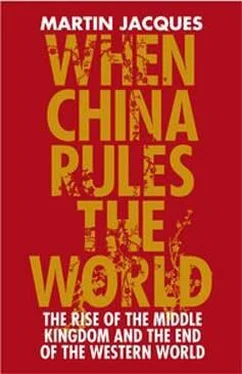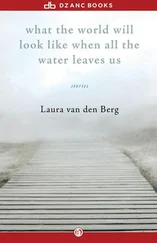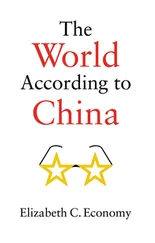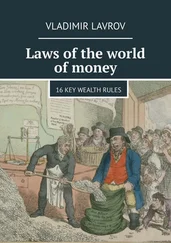[303]Manuel Castells, The Information Age: Economy, Society and Culture. Vol. III, End of Millennium (Oxford: Blackwell, 1998), pp. 244-64.
[304]Angus Maddison, The World Economy: Historical Statistics (Paris: OECD, 2003), p. 260. These are average annual compound growth rates.
[305]World Bank, ‘Will Resilience Overcome Risk? East Asia Regional Outlook’, November 2007, posted on www.worldbank.org, p. 11. Poverty is defined as earning $2 per day or less.
[306]Danni Rodrik, One Economics Many Recipes: Globalization, Institutions, and Economic Growth (Princeton: Princeton University Press, 2007), pp. 18–20.
[307]Castells, The Information Age: III, End of Millennium , pp. 270-71.
[308]As S. N. Eisenstadt wrote: ‘Most of the studies of modernization in general and of convergence of industrial societies in particular… stressed that the more modern or developed different societies [became], the more similar… they [would] become in their basic, central, institutional aspects, and the less the importance of traditional elements within them.’ Cited in Paul A. Cohen, Discovering History in China: American Historical Writing on the Recent Chinese Past (New York: Columbia University Press, 1984), p. 78.
[309]Post-war Japan might also be included on the grounds of its growth, but has been excluded because of its earlier industrial transformation.
[310]Fu-Chen Lo and Yue-Man Yeung, eds, Emerging World Cities in Pacific Asia (Tokyo: United Nations University Press, 1996), p. 155; UN Human Development Report 1997 (New York: Oxford University Press, 1997), p. 182.
[311]Eric Hobsbawm, Globalization, Democracy, and Terrorism (London: Little, Brown, 2007), p. 33; UN Human Development Report 1997 , p. 182.
[312]Lo and Yeung, Emerging World Cities in Pacific Asia , p. 183.
[313]Ibid., pp. 155, 338; UN Human Development Report 1997 , p. 192.
[314]United Nations Development Programme, Rapport mondial sur le développement humain 1999 (Paris: De Boeck Université, 1999), p. 198.
[315]Paul Bairoch, De Jéricho à Mexico: Villes et économie dans l’historie (Paris: Gallimard, 1985), p. 288.
[316]‘ Shanghai Tops 20m’, China Daily , 5 December 2003.
[317]This practice first appeared during the Song dynasty (AD 960-1279), shortly after the spread of paper money for commercial purposes; Kenneth Dean, ‘Despotic Empire/Nation-State: Local Responses to Chinese Nationalism in an Age of Global Capitalism’, in Chen Kuan-Hsing, ed., Trajectories: Inter-Asia Cultural Studies (London: Routledge, 1998), p. 169.
[318]World Bank, The East Asian Miracle (Washington, DC: Oxford University Press, 1993), pp. 29–32.
[319]Interview with Hung Tze Jan, Taipei, March 1999.
[320]Interview with Tatsuro Hanada, Tokyo, June 1999.
[321]Acknowledgements to Ti-Nan Chi, Bing C. P. Chu and Chu-joe Hsia in Taipei; Tatsuro Hanada, Takashi Yamashita, Mark Dytham and Astrid Klein in Tokyo; and Wu Jiang and Lu Yongyi in Shanghai.
[322]Interview with Toshiya Uedo, Tokyo, June 1999.
[323]Anthony Giddens, The Consequences of Modernity (Cambridge: Cambridge University Press, 1997), p. 105.
[324]Pudong was conceived, in 1992, as a completely new business and financial centre for Shanghai. Across the Huangpu River from the Bund, it represents an extraordinary urban and architectural leap into the new century: Cheng Youhua, et al., ‘Urban Planning in Shanghai towards the 21st Century’, in Dialogue (Taipei), February/March 1999, pp. 48–55.
[325]Interview with Gao Rui-qian, Shanghai, April 1999.
[326]Giddens, The Consequences of Modernity , p. 108.
[327]The literature on the Chinese diaspora, and the role of the family and kinship, is voluminous: see, for example, Lynn Pan, Sons of the Yellow Emperor: The Story of the Overseas Chinese (London: Arrow, 1998); Robin Cohen, Global Diasporas: An Introduction (London: UCLPress, 1997), Chapters 4, 7; Joel Kotkin, Tribes: How Race, Religion, and Identity Determine Success in the New Global Economy (New York: Random House, 1992), Chapter 6.
[328]‘Risk’, available at www.bbc.co.uk/radio4/reith1999/lecture2.shtml.
[329]Mark Elvin, ‘Secular Karma: The Communist Revolution Understood in Traditional Chinese Terms’, in Mabel Lee and A.D. Syrokomia-Stefanowski, eds, Modernisation of the Chinese Past (Sydney: University of Sydney, School of Asian Studies, 1993), p. 75.
[330]Huang Ping, ‘“Beijing Consensus”, or “Chinese Experiences”, or What?’, unpublished paper, 2005, p. 8.
[331]Chris Patten, East and West: China, Power, and the Future of East Asia (London: Times Books, 1998), p. 166.
[332]For an interesting discussion of Japan ’s specificity, see Alan Macfarlane, Japan Through the Looking Glass (London: Profile Books, 2007).
[333]Howard Gardner, To Open Minds (New York: BasicBooks, 1989), p. 280.
[334]BBC2, Proud to be Chinese (broadcast December 1998), transcript of interview with Katherine Gin.
[335]Boyd and Richerson, Culture and Evolutionary Process (Chicago: Chicago University Press, 1985), p. 60.
[336]Interview with Shad Faruki, Kuala Lumpur, August 1994.
[337]Nicholas Ostler, Empires of the Word: A Language History of the World (London: HarperCollins, 2005), p. 7.
[338]Interview with Hung Tze Jan, Taipei, March 1999.
[339]James Stanlaw, ‘English in Japanese Communicative Strategies’, in Braj B. Kachru, ed., The Other Tongue: English Across Cultures (Urbana: University of Illinois Press, 1992), pp. 181-4. It has been estimated that 8 per cent of the total Japanese vocabulary is derived from English, with virtually no reverse traffic; ibid., p. 183. Also Braj B. Kachru, Asian Englishes: Beyond the Canon (Hong Kong: Hong Kong University Press, 2005), p. 81.
[340]Kachru, Asian Englishes , pp. 191- 2. A survey in 1998 found that 81.7 per cent of Japanese only speak Japanese even though virtually no one else speaks their language; Dentsu Institute for Human Studies, Life in the Era of Globalisation: Uncertain Germans and Japanese Versus Confident Americans and British, the Second Comparative Analysis of Global Values (Tokyo: July 1998). Also, Kachru, Asian Englishes , Chapter 4.
[341]Chin-Chuan Cheng, ‘Chinese Varieties of English’, in Kachru, ed., The Other Tongue , p. 166.
[342]Ostler, Empires of the Word , pp. 146, 155.
[343]Ibid., pp. 116-17.
[344]Ibid., pp. 117, 144, 156-7, 162.
[345]David Graddol, The Future of English (London: British Council, 1997), pp. 8–9.
[346]‘Talk in English, Please, Korean Kids Told’, International Herald Tribune , 25-6 March 2006.
[347]Graddol, The Future of English , pp. 60–61; ‘Across All Cultures, English Says It All’, International Herald Tribune , 10 April 2007; ‘At Global Business Schools, English Adds Up’, International Herald Tribune , 11 April 2007.
[348]Ostler, Empires of the Word , Chapter 1.
[349]‘China Soon to be the World’s Biggest Internet User’, Guardian , 25 January 2007.
[350]Michael Curtin, Playing to the World’s Biggest Audience: The Globalization of Chinese Film and TV (Berkeley: University of California Press, 2007), p. 8; Bella Thomas, ‘What the World’s Poor Watch on TV’, Prospect , 82, January 2003.
[351]Graddol, The Future of English , pp. 60–61.
[352]Ostler, Empires of the Word , pp. 162-3.
[353]Graddol, The Future of English , pp. 58-9.
Читать дальше












